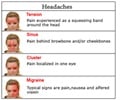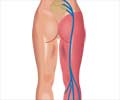To alleviate pain, especially headaches, scientists are relying more on combined analgesics rather than sticking to mono therapy.

"Pain matrix", a network of brain areas, is involved in pain perception and its control. This diversification of the pain perception and exhibition explains why a broader range of molecularly different substances can be used for the treatment of different pain conditions and why in more recently several studies have described a much better efficacy of a precise multi-target combination therapy as compared to mono-therapy.
Dr. Andreas Straube from University of Munich probed for the evidences which support combination therapy in the pharmacotherapy of pain, particularly in headaches. For the study, fixed-dose combination of acetylsalicylic acid (ASA), paracetamol (acetaminophen), and caffeine was reviewed. The huge advantage of using such a fixed combination is that the active ingredients act on different but distinct molecular targets. This enables them to act on more signaling cascades involved in pain.
It was obvious from the study that what one drug - acetylsalicylic acid (ASA), paracetamol (acetaminophen), and caffeine could not achieve on its own could be achieved when they were combined. Principal Author of the study, Dr. Andreas Straube concluded by stating, “After the study, here is substantial clinical evidence that a multi-component therapy is definitely more effective than mono-component therapies as it boosts their effectiveness for pain relief.”
Reference article:
http://www.biomedcentral.com/content/pdf/1471-2377-11-43.pdf
Source-Medindia














